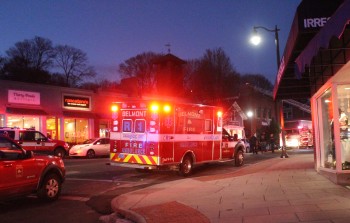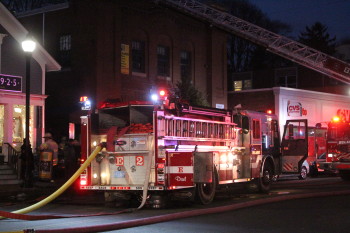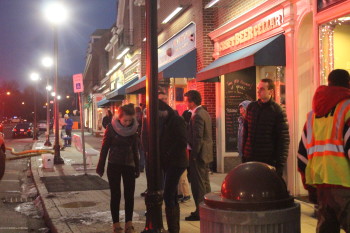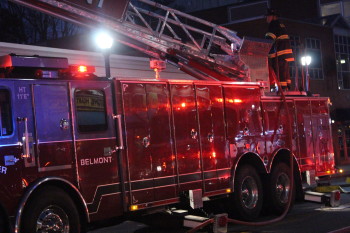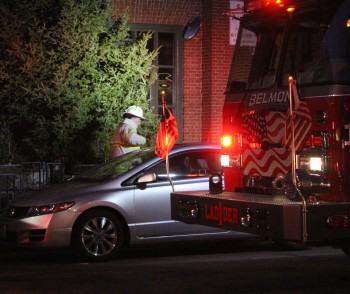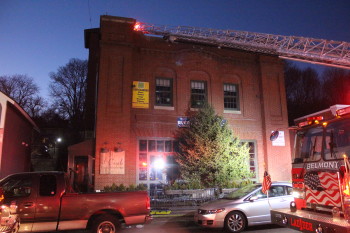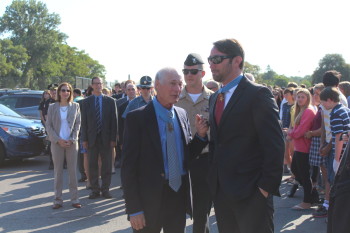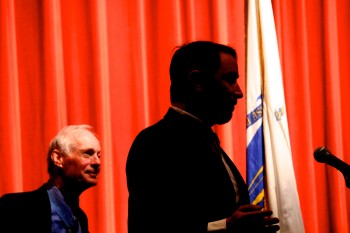Photo: Fire at il Casale in Belmont Center.
A smokey fire in an exhaust flue sent Belmont and Arlington fire departments to the building housing upscale il Casale restaurant, clogging Belmont Center with fire equipment during Thursday evening rush hour, Jan. 7.
Firefighters were seen on the building’s roof searching for flames inbetween walls and the ceiling.
According to il Casale’s General Manager Joanne Hastings, the fire was discovered by staff in one of the exhaust hoods in the restaurant’s kitchen at 4:10 p.m. There were no customers in the restaurant located at 50 Leonard St.
None of the dozen or so employees were injured, many who relocated to Starbucks across the street.
“There will have to be some repair work, obviously, more to repair the water damage. So we will be closed for a couple of days,” said Hastings, who has been with the eatery for the past seven months.
The structure, which consists of two buildings and once was the town’s main fire station built in the 19th century, is owned by Brian Burke. Above the restaurant, which opened in 2009, is the popular Every Body Pilates studio.
“Its a little ironic that it happened in the original fire station,” said one witness.
The second building in the rear of the restaurant consists of ten individual offices, including two executive offices.
Traffic was diverted from Leonard Street for more than two hours.

